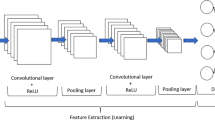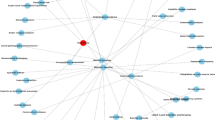Abstract
Traditional remote sensing water identification methods lack texture and shape information extraction, and the previous algorithms lack the versatility of satellite images of different resolutions. Therefore, for the remote sensing image water segmentation task, this paper first collects GF-2 images to establish a remote sensing image water segmentation dataset. PSPNet, Deeplab v3+, and U-Net have achieved good training results on this dataset. Secondly, to further improve the accuracy of water body segmentation, an attention module is introduced in the feature fusion part of the U-Net model to improve the feature fusion efficiency. Among them, a channel-spatial attention module, CBAM, performs the best. The experimental results show that the U-Net model introduced with CBAM has various degrees of improvement in the six evaluation indicators of remote sensing water body segmentation. The IoU and MIoU of CBAM-vgg16-UNet reach 92.66% and 95.91%, respectively. Finally, the experimental results show that the method also performs well on GF-1, GF-6, Landsat8 and EO-1 datasets, verifying the generality of the network.











Similar content being viewed by others
Data Availability
Data and codes in this study are available from the corresponding authors upon reasonable request.
References
Chen LC, PapandreouG., Kokkinos I, Murphy K, Yuille AL (2014) Semantic image segmentation with deep convolutional nets and fully connected crfs. arXiv preprint arXiv:1412.7062
Chen LC, Papandreou G, Schroff F, Adam H (2017) Rethinking atrous convolution for semantic image segmentation. arXiv preprint arXiv:1706.05587
Chen LC, Zhu Y, Papandreou G, Schroff F, Adam H (2018) Encoder-decoder with atrous separable convolution for semantic image segmentation
Chen L-C, Papandreou G, Kokkinos I, Murphy K, Yuille AL (2017) Deeplab: Semantic image segmentation with deep convolutional nets, atrous convolution, and fully connected crfs. IEEE Trans Pattern Anal Mach Intell 40(4):834–848
Chen J, Fan J, Zhang M, Zhou Y, Shen C (2022) Msf-net: A multiscale supervised fusion network for building change detection in high-resolution remote sensing images. IEEE Access 10:30925–30938. https://doi.org/10.1109/ACCESS.2022.3160163
Chollet FI (2017) Xception: Deep learning with depthwise separable convolutions
Dai Y, Gieseke, F, Oehmcke S, Wu Y, Barnard K (2021) Attentional feature fusion. In: Proceedings of the IEEE/CVF Winter Conference on Applications of Computer Vision (WACV), pp. 3560–3569
He Y, Yao S, Yang W, Yan H, Zhang L, Wen Z, Zhang Y, Liu T (2021) An extraction method for glacial lakes based on landsat-8 imagery using an improved u-net network. IEEE Journal of Selected Topics in Applied Earth Observations and Remote Sensing 14:6544--6558
He K, Zhang X, Ren S. Sun J (2016) Deep Residual Learning for Image Recognition. https://doi.org/10.1109/CVPR.2016.90
Hu J, Shen L, Albanie S, Sun G, Wu EH (2020) Squeeze-and-excitation networks. IEEE Trans Pattern Anal Mach Intell 42(8):2011–2023. https://doi.org/10.1109/TPAMI.2019.2913372
Lee H, Lee K, Kim JH, Na Y, Park J, Choi JP, Hwang JY (2021) Local similarity siamese network for urban land change detection on remote sensing images. IEEE Journal of Selected Topics in Applied Earth Observations and Remote Sensing 14:4139–4149. https://doi.org/10.1109/JSTARS.2021.3069242
Li J, Xu M, Xiu H (2018) U-net network for building information extraction of remote-sensing imagery. International Journal of Online Engineering 14(12):179–190. https://doi.org/10.3991/ijoe.v14i12.9335
Li R, Zheng S, Duan C, Su J, Zhang C (2022) Multistage attention resu-net for semantic segmentation of fine-resolution remote sensing images. IEEE Geosci Remote Sens Lett 19. https://doi.org/10.1109/LGRS.2021.3063381
Long J, Shelhamer E, Darrell T (2015) Fully convolutional networks for semantic segmentation
Lv N, Zhang, Z, Li C, Deng J, Su T, Chen C, Zhou Y (2022) A hybrid-attention semantic segmentation network for remote sensing interpretation in land-use surveillance. Int J Mach Learn Cybern 1–12
Ma H, Liu Y, Ren Y, Yu J (2020) Detection of collapsed buildings in post-earthquake remote sensing images based on the improved yolov3. Remote Sensing 12(1). https://doi.org/10.3390/rs12010044
Pan T (2015) Technical characteristics of gaofen-2 satellite. Aerospace China (01), 3–9
Pan F, Wu Z, Liu Q, Xu Y, Wei Z (2021) Dcff-net: A densely connected feature fusion network for change detection in high-resolution remote sensing images. IEEE Journal of Selected Topics in Applied Earth Observations and Remote Sensing 14:11974–11985. https://doi.org/10.1109/JSTARS.2021.3129318
Rashkovetsky D, Mauracher F, Langer M, Schmitt M (2021) Wildfire detection from multisensor satellite imagery using deep semantic segmentation. IEEE Journal of Selected Topics in Applied Earth Observations and Remote Sensing 14:7001–7016. https://doi.org/10.1109/JSTARS.2021.3093625
Ronneberger O, Fischer P, Brox T (2015) U-Net: Convolutional Networks for Biomedical Image Segmentation. Springer
Sadiq R, Akhtar Z, Imran M, Ofli F (2022) Integrating remote sensing and social sensing for flood mapping. Remote Sensing Applications-Society and Environment 25. https://doi.org/10.1016/j.rsase.2022.100697
Sandler M, Howard A, Zhu M, Zhmoginov A, Chen LC (2018) MobileNetV2: Inverted Residuals and Linear Bottlenecks. https://doi.org/10.1109/CVPR.2018.00474
Shamsolmoali P, Zareapoor M, Wang R, Zhou H, Yang J (2019) A novel deep structure u-net for sea-land segmentation in remote sensing images. IEEE Journal of Selected Topics in Applied Earth Observations and Remote Sensing 12(9):3219–3232. https://doi.org/10.1109/JSTARS.2019.2925841
Simonyan K, Zisserman A (2014) Very deep convolutional networks for large-scale image recognition
Su Z, Li W, Ma Z, Gao R (2021) An improved u-net method for the semantic segmentation of remote sensing images. Appl Intell 1–13
Wang D, Chen X, Jiang M, Du S, Xu B, Wang J (2021) Ads-net:an attention-based deeply supervised network for remote sensing image change detection. Int J Appl Earth Obs Geoinf 101. https://doi.org/10.1016/j.jag.2021.102348
Wang Z, Du J, Wang C, Qiu S, Li S, Ma Y (2021) Research progress report on optical remote sensing extraction method of urban water information. Journal of Central China Normal University 55(4)
Wang Z, Wang J, Yang K, Wang L, Su F, Chen X (2022) Semantic segmentation of high-resolution remote sensing images based on a class feature attention mechanism fused with deeplabv3+. Comput Geol 158, 104969
Wang Q, Wu B, Zhu P, Li P, Zuo W, Hu Q (2020) ECA-Net: Efficient Channel Attention for Deep Convolutional Neural Networks. https://doi.org/10.1109/CVPR42600.2020.01155
Wang Z, Zhang M, Liu W (2019) An effective road extraction method from remote sensing images based on self-adaptive threshold function
Woo S, Park J, Lee JY, Kweon IS (2018) Cbam: Convolutional block attention module. In: Proceedings of the European Conference on Computer Vision (ECCV), pp. 3–19
Xu Y, Li J, Du C, Chen H (2022) Nbr-net: A nonrigid bidirectional registration network for multitemporal remote sensing images. IEEE Trans Geosci Remote Sens 60. https://doi.org/10.1109/TGRS.2022.3162094
Ye Y, Tang T, Zhu B, Yang C, Li B, Hao S (2022) A multiscale framework with unsupervised learning for remote sensing image registration. IEEE Trans Geosci Remote Sens 60. https://doi.org/10.1109/TGRS.2022.3167644
Zang N, Cao Y, Wang Y, Huang B, Zhang L, Mathiopoulos PT (2021) Land-use mapping for high spatial resolution remote sensing image via deep learning: A review. IEEE Journal of Selected Topics in Applied Earth Observations and Remote Sensing
Zeng L, Du Y, Lin H, Wang J, Yin J, Yang J (2021) A novel region-based image registration method for multisource remote sensing images via cnn. IEEE Journal of Selected Topics in Applied Earth Observations and Remote Sensing 14:1821–1831. https://doi.org/10.1109/JSTARS.2020.3047656
Zhang X, Wang Z, Cao L, Wang M (2021) A remote sensing land cover classification algorithm based on attention mechanism. Can J Remote Sens 47(6):835–845
Zhao H, Shi J, Qi X, Wang X, Jia J (2017) Pyramid scene parsing network
Funding
This work was supported in part by research on water body identification and water quality inversion algorithm based on deep learning for remote sensing images of Ningxia region, it belongs to the 2023 Central Government Guided Local Science and Technology Development Special Project (Ningxia Hui Autonomous Region). This work was also supported in part by the Graduate Innovation Program of Ningxia University GIP2021006.
Author information
Authors and Affiliations
Contributions
Tiantian Shi is responsible for paper writing, data set production and algorithm improvement. Professor Zhonghua Guo is responsible for the review and revision of the thesis. Changhao Li is responsible for the production of the dataset and some related experiments.Xuting Lan, Xiang Gao, and Xiang Yan are responsible for dataset production and paper review.
Corresponding author
Ethics declarations
Ethical approval
All authors were informed and agreed to submit this manuscript.
Conflict of interest
The authors declare they have no competing interests.
Additional information
Communicated by: H. Babaie.
Publisher's Note
Springer Nature remains neutral with regard to jurisdictional claims in published maps and institutional affiliations.
Rights and permissions
Springer Nature or its licensor (e.g. a society or other partner) holds exclusive rights to this article under a publishing agreement with the author(s) or other rightsholder(s); author self-archiving of the accepted manuscript version of this article is solely governed by the terms of such publishing agreement and applicable law.
About this article
Cite this article
Shi, T., Guo, Z., Li, C. et al. Improvement of deep learning Method for water body segmentation of remote sensing images based on attention modules. Earth Sci Inform 16, 2865–2876 (2023). https://doi.org/10.1007/s12145-023-00988-8
Received:
Accepted:
Published:
Issue Date:
DOI: https://doi.org/10.1007/s12145-023-00988-8




